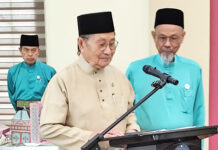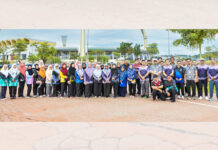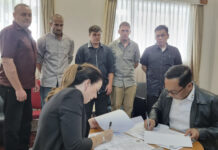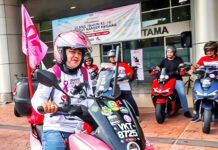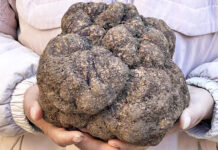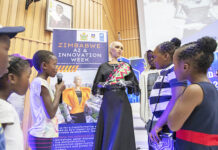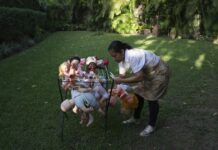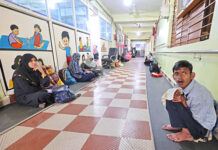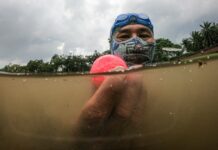ANN/THE STAR – On the eve of Gawai, preparations were almost at fever pitch in Lenti Abang’s home in Kampung Nangka, Kota Samarahan, Sarawak. Apart from the last-minute cleaning before the festivities (on June 1 and 2), Lenti was busy in the kitchen preparing the goodies that are must-haves for any festival.
Popular Gawai songs like Sepating Bungai Jarau (Rickie Andrewson), Richah Gawai (Ramles Walter) and Gawai Kaamaatan (Ramles Walter and Debra Sia) were playing loudly as Lenti’s grandchildren made sure the home was all spruced up.
Lenti was confined to the kitchen, making her signature traditional snack – penganan jala, a crunchy, deep-fried biscuit-like snack made from rice flour, water and palm sugar, or gula apong syrup.
The 68-year-old Iban woman roped in her grandsons, Stu David, 26, and Damian Mikael Harry, 15, and grandniece Florella Mikin, 20, to help her with the preparations. Over time, this has become an annual ritual for them.
“It is a must to have penganan jala for Gawai,” said Lenti.
“Although it is time-consuming to make this delicacy from scratch, we continue to do it as it is part of our heritage. Penganan jala is also made during special occasions like religious holidays or weddings.
“I learned this recipe from my grandmother and now, it has come time to teach my older grandchildren this recipe,” said the grandmother of 15, who has been making penganan jala for over 50 years.
Gawai is celebrated as a harvest festival and thanksgiving, to express gratitude for the abundance in the past year, and wish for a better yield in the coming seasons. It is the biggest festival for the Dayak community. Dayak is collective name for the tribes of Iban, Bidayuh, Kayan, Kenyah, Kelabit, and Murut.
In Sabah, Kaamatan (Harvest Festival) is celebrated on May 30 and 31.
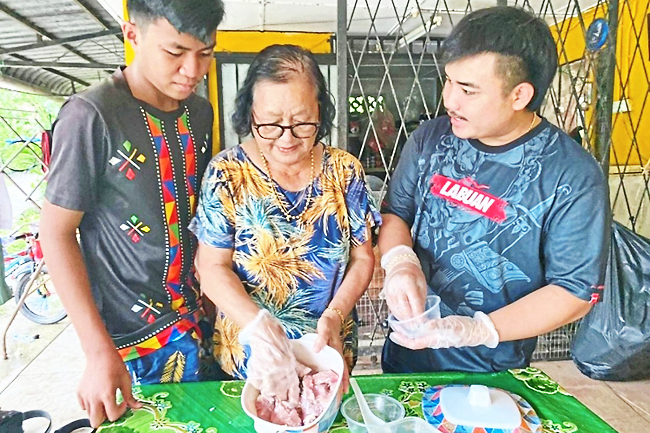

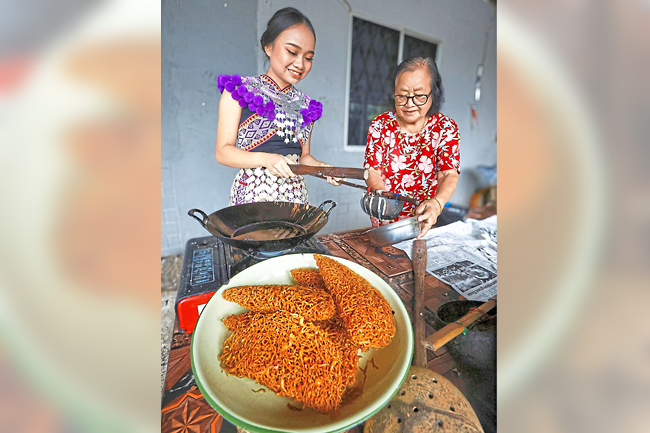
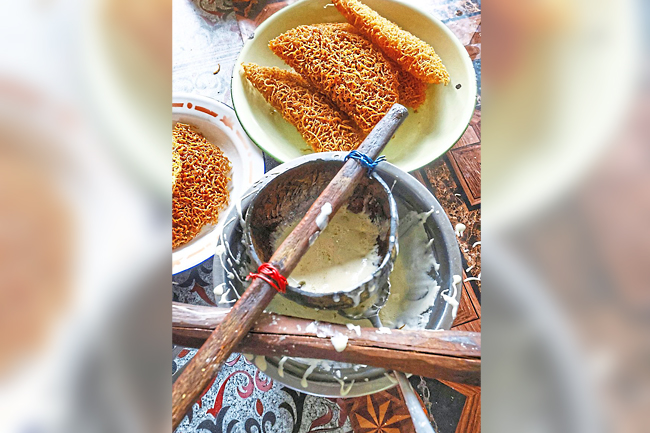
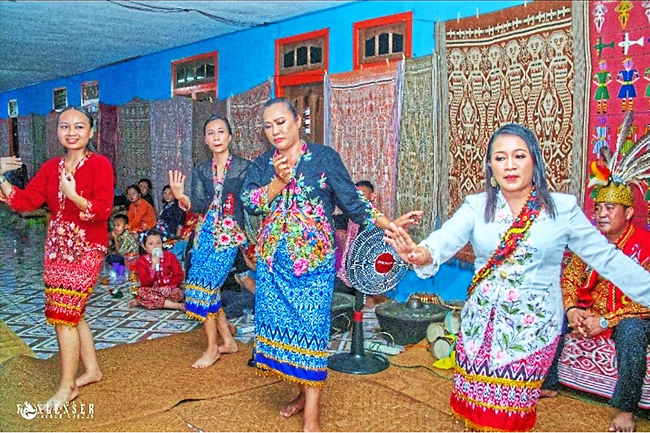
HERITAGE KEEPER
Lenti is happy that her grandsons and grandniece are enthusiastic about learning the traditional recipe.
“Although it is convenient to purchase these cookies off the shelves, homemade goodies are always fresher and tastier. I am happy the younger generation is willing to learn and preserve this tradition,” said Lenti, who was born and raised in Kota Samarahan.
Penganan jala looks almost like a fish net (hence why it is called ‘jala’). It is a sweetish, crispy biscuit that is made with rice flour and palm sugar, mixed together with water or coconut milk to form a batter.
Once the batter reaches the right consistency (similar to pancake batter), it’s time to fry the biscuits.
Florella took her position in front of the stove: She dished the batter it into a mould that is made from coconut shell with holes at the bottom for the batter to trickle down into the oil.
Holding the bamboo handle, she deftly moved her hand in steady concentric circles so the batter forms a fine, lacy layer in the hot oil. She used a wooden stick in her other hand to tap the mould so the batter passes through the mould evenly.
She then folded the circular biscuits in half to form semicircles (in the hot oil) and took them out as soon as they turn a golden brown shade.
Once done, she laid the crispy snack aside to cool and repeated the process.
The process of making pengarang jala is time-consuming and Stu sometimes complains that it takes painstakingly long because they have to make them one by one.
“It takes a lot of time because you have to stand by hot oil and watch carefully to make sure we take each piece out as soon as they turn golden and crispy. You need to watch closely to ensure they don’t get burnt.
“It gets very hot in the afternoons so we try to complete making as many penganan jala as possible by the early afternoon,” said Stu, who runs a food business in Kota Samarahan.
On the table in the kitchen are several containers of ready-to-eat penganan jala which Lenti made over the last few days. She planned to distribute them to her four children and to her neighbours the next morning.
“On Gawai, it is a must to distribute sweet snacks like kek lapis, kuih penyaram (a chewy sweet snack made from rice flour, wheat flour and palm sugar), and kuih bunga ros (made from rice flour, coconut milk and sugar) to our neighbours and relatives.
“By giving away sweet snacks, we hope to sweeten our relationships with loved ones,” said Lenti, who is a widow.
FOOD FOR THE SOUL
Gawai is always celebrated with a lot of merriment, traditional food and rituals. In Lenti’s home, it is a must to prepare Dayak dishes like kacangma (chicken cooked with ginger and motherwort), daun ubi tutuk (stir fried pounded cassava leaves) and midin goreng belacan (stir fried bracken ferns with shrimp paste).
Rice, harvested from their farm, was served as well, as it symbolises abundance and prosperity.
Her daughters, Linda Judin, 46, and Monania Judin, 43, and her son in law, contractor Antau Saong @ Udak, 49, were busy preparing manuk pansuh (chicken cooked in bamboo) over firewood in Lenti’s backyard. This is also one of the must haves for Gawai for her family.
One of Lenti’s signature dishes during Gawai is pekasam ikan (fermented fish) which she usually prepares a couple of weeks before Gawai to get the best of its flavours. It is deep fried, or steamed, and served with piping hot rice and other side dishes.
Lenti prepared five large glass jars of pekasam ikan this year to serve to her guests during Gawai. She prefers to use river fish like sultan fish (hoven carp), ikan tapah (wallago catfish) and ikan palau because the flesh of these fish are tender and sweet.
Stu and Damian helped their beloved grandma prepare the fish – incidentally their favourite.
“On the first day, we welcome guests to our home. On the second day, we practise ngabang (visiting relatives and friends) to enjoy their delicious food,” said Lenti, who has five children.
In some Iban longhouses, a ritual ceremony known as ‘miring’ is conducted to honour ancestors and seek blessings for the community.
As part of the tradition, some communities place a ‘ranyai’ (a chopped banana or Nipah tree) in the communal hall. This ranyai acts as a central backdrop for various cultural performances, including ‘ngajat’ (a traditional dance), ‘bepencha’ (a sword dance), and ‘bekuntau’ (a self-defence martial arts performance).
These rituals and performances also serve to strengthen communal bonds and preserve the rich cultural heritage of the Iban people.
On the second day of Gawai, Lenti visit her relative’s longhouse at Kampung Teg Lam in Simunjan, about an hour’s drive away. There were dance performances and everyone came dressed up to soak in the festivities.
“Gawai brings families and friends together, especially those from afar. The joy of reuniting, sharing stories, and feeling happy over food makes Gawai truly special.” – Sheela Chandran




